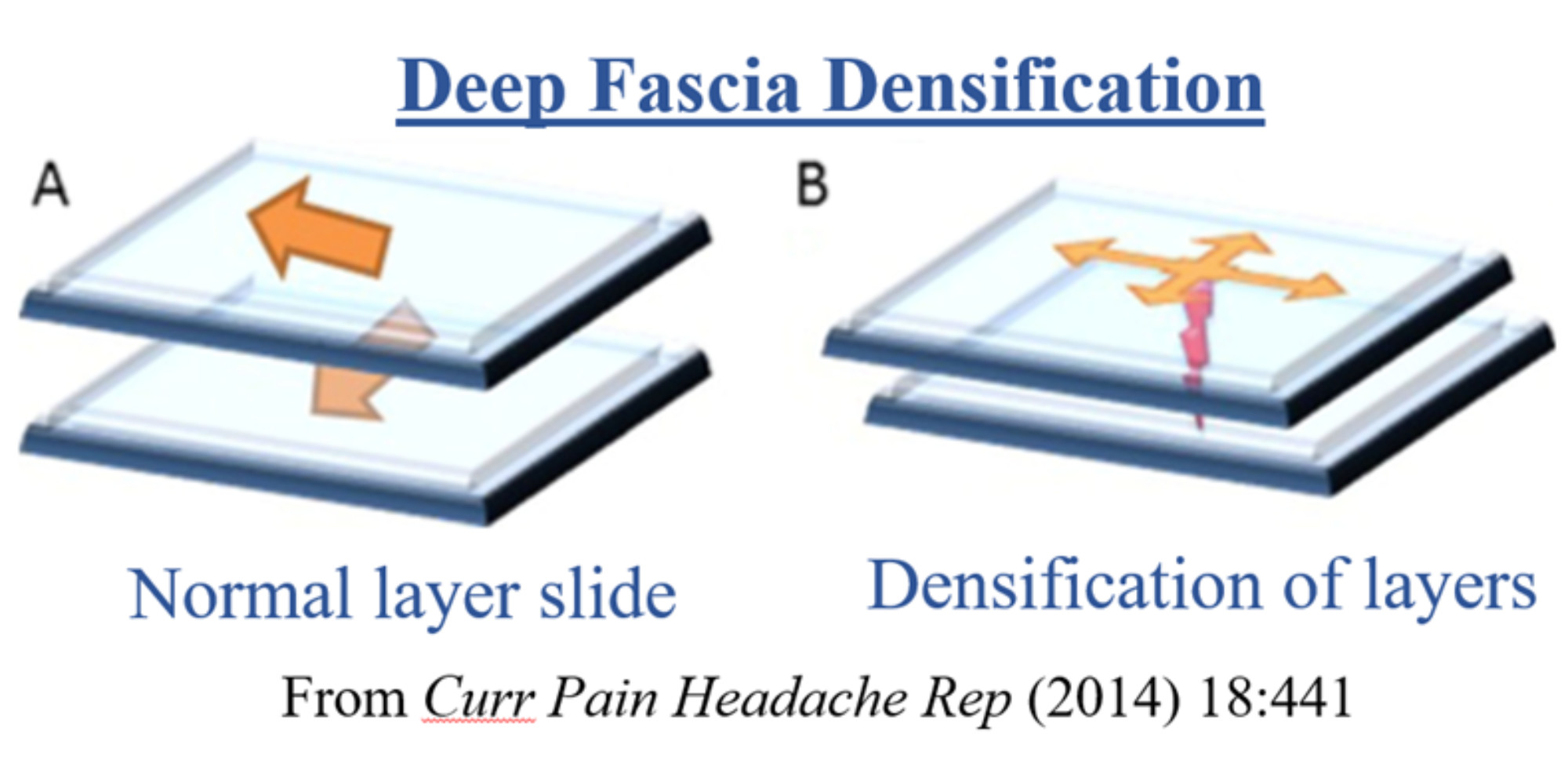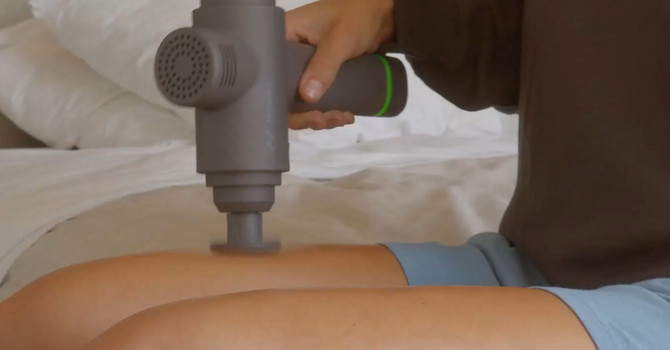I believe that many of the health problems adults encounter stem from unresolved loss of slide in the connective tissues that originates with childhood bumps and bruises. All of us begin falling down from the moment we begin standing up. Every day kids fall off a bike, get tackled in sports, or swing off the monkey bars. Little ones may cry a bit then run back to play, while we marvel at their resiliency. Yet I can’t help but wonder if something subtle occurs – the beginning of connective tissue overload and dysfunction. Kids’ tissues are subject to the same laws of nature as ours, and trauma is one source of overload initiating dysfunctions known as fascial densifications. For the most part children have a cleaner slate in terms of the accumulation of densifications as compared to adults. Left unresolved densifications will, over time, breed further dysfunction as the body compensates. Eventually these dysfunctions and compensations add up, which brings us to adulthood when so many problems manifest. Let’s look at some of the issues many kids encounter.
Functional Constipation (FC)
This is the term used for constipation that has no known cause. It inflicts both children and adults with bowel movements (BM) that maybe be infrequent, hard and difficult to pass prompting straining, and a sense of incomplete emptying. Sources say that normal frequency for a BM varies from three times a day to three times per week (in my opinion these are extremes). It is estimated that 14.4% of children worldwide have FC, with 3-5 % of all pediatric consults as well as 25% of all pediatric gastroenterology specialist visits related to constipation issues. First-line measures include increasing water and fiber intake, as well as using stool softeners, bowel stimulants, and even enemas as needed. Sometimes behaviors and habits need modifying, such as the reluctance to have a bowel movement at school or in any public restroom. Emotions and stress for parents and kids struggling with FC can run high.
Growing Pains (GP)
Noted in the literature as far back as the 1800’s, GP is the term describing discomfort in the legs of a child that has no apparent cause (idiopathic). Though there is no evidence that it has anything to do with growing, blaming it and thereby naming it as such seems to satisfy adults trying to manage it. GP manifest more often at night than day, and range from annoying to severe. There are no tests (imaging, bloodwork) that confirm the disorder, and diagnosis is based on symptoms. Treatment is directed at symptom control with heat, massage, stretching, and any other measure that will settle the child. It is often described as a “benign” disorder, which by definition means “having no harmful influence or effect” (children and parents dealing with GP may argue this). Symptoms eventually diminish and seem to resolve with time - perhaps prompting the use of benign. Yet I can attest to GP being in the history of many adults with idiopathic plantar fasciitis, knee pain, digestive and urinary issues, back pain, and more. Perhaps instead of benign, “dormant” would be a better word choice, which is defined as follows: “in an inactive phase but not cured; no longer exhibiting symptoms but perhaps only temporarily.”

Shin Splints & Ankle Sprains
I group these together as they share some common features and both involve the calf, ankle, and foot. Shin splints date back to 1913 in the literature, with disagreement about the actual definition persisting. Generally the symptoms include pain/discomfort in the leg(s) typically associated with high-impact activities like running. The exact mechanism driving the pain is undetermined. While impact as the cause may seem straightforward, shin splints can be very unresponsive to treatments of rest, ice, stretching, shoe inserts, and more. A break from activity often helps symptoms to diminish in time.
I believe that ankle sprains are one of the most underrated injuries to the human body. While there are different grades reflecting severity of a sprain, anytime there is a rolling of the ankle (often but not always to the outside) a sprain has occurred. Rest, ice, elevation, and compression will usually resolve the acute phase and pain, giving the false impression that all is healed. But the trauma begins the formation of fascial densifications in the foot and leg, which are not resolved with the previously mentioned measures. Once an ankle is sprained it is notoriously subject to recurrent sprains, which are erroneously attributed to ankle weakness. Both shin splints and ankle sprains are often in the history of adults contending with musculoskeletal and internal organ issues of all sorts.

Consider the Fascia
Whether you are a parent struggling with your child’s issues, or an adult struggling with your own, it’s prudent to consider the role the fascia can play. This can mean the fascia surrounding the colon as well as the fascia of the lower limbs: it’s all connected. Research demonstrates that fascia is highly innervated and closely associated with the nervous system to coordinate movement of the trunk and limbs, as well as the internal organs (known as motility). Research also shows that densifications in the fascia alter the gliding between fascial layers, subjecting the associated tissues to intense mechanical stress. This is a plausible explanation for many idiopathic, recurrent, and unresponsive problems that have confounded medical practice for centuries. With all the traumas (major or minor) that kids sustain, it’s not hard to understand how over time their fascia can become overloaded and densified to the point of developing symptoms. Childhood issues that are seemingly healed and benign may actually harbor dormant densifications, which can exert an impact later in life. Such densifications are not found with MRI or lab work, but rather with a thorough history, movement assessment, and palpation to identify dysfunctional tissue.
I hope you can see the possibilities for changing these issues, and how early intervention is ideal. To learn more about how fascial work may help please feel free to give me a call, send a text, book an Exploratory Session, or schedule an Initial Consultation. You have options – act on them!
Wishing You Health & Joy,
Colleen
References:
- Tran, Duc Long, and Palittiya Sintusek. "Functional constipation in children: What physicians should know." World journal of gastroenterology 29.8 (2023): 1261.
- Lehman, Patrick J., and Rebecca L. Carl. "Growing pains: when to be concerned." Sports Health 9.2 (2017): 132-138.
- Thacker, Stephen B., et al. "The prevention of shin splints in sports: a systematic review of literature." Medicine & Science in Sports & Exercise 34.1 (2002): 32-40.
- Suarez-Rodriguez, Vidina, et al. "Fascial innervation: a systematic review of the literature." International Journal of Molecular Sciences 23.10 (2022): 5674.
- Gerwin, Robert, et al. "Summaries of the Padua symposium on myofascial pain, fibromyalgia, and fascial pain disorders, June 2023, Aula Falloppio at the Human Anatomy Institute of the University of Padova, Italy." European Journal of Translational Myology 33.4 (2023): 12194.







